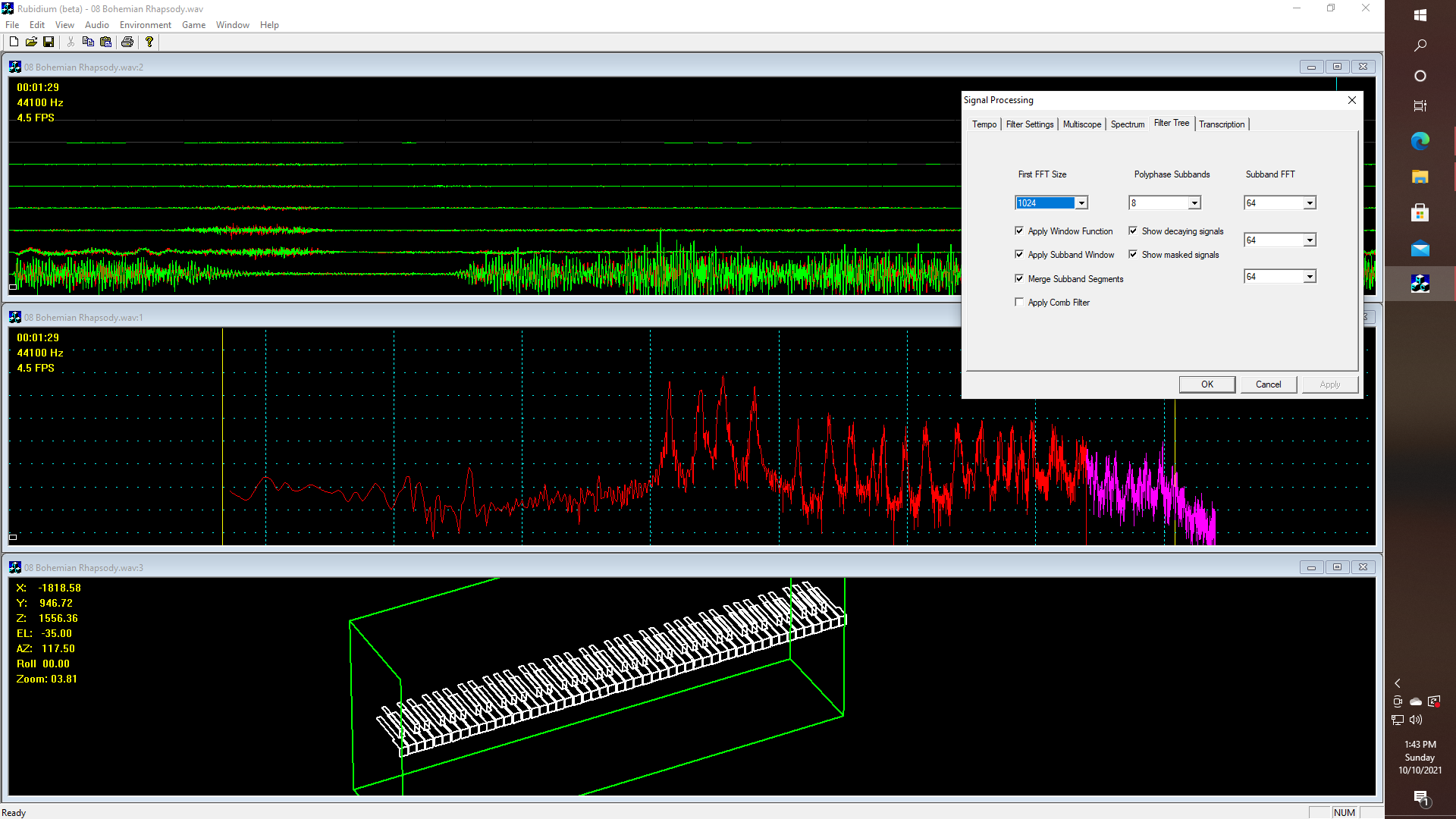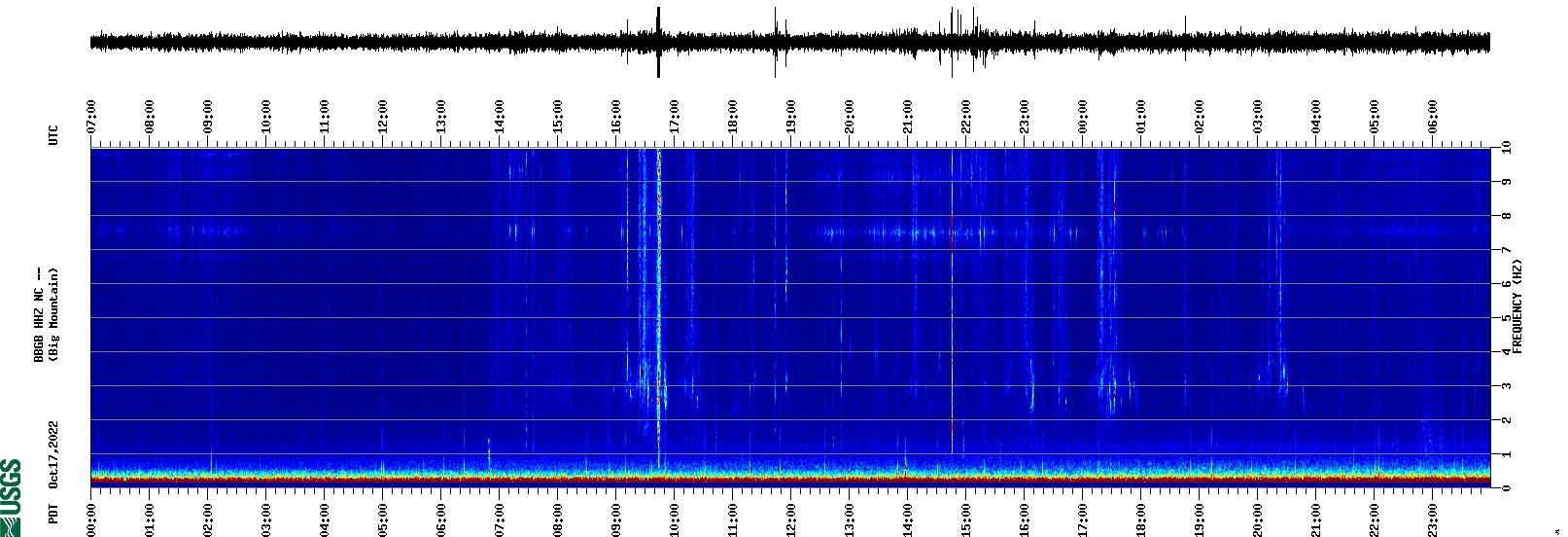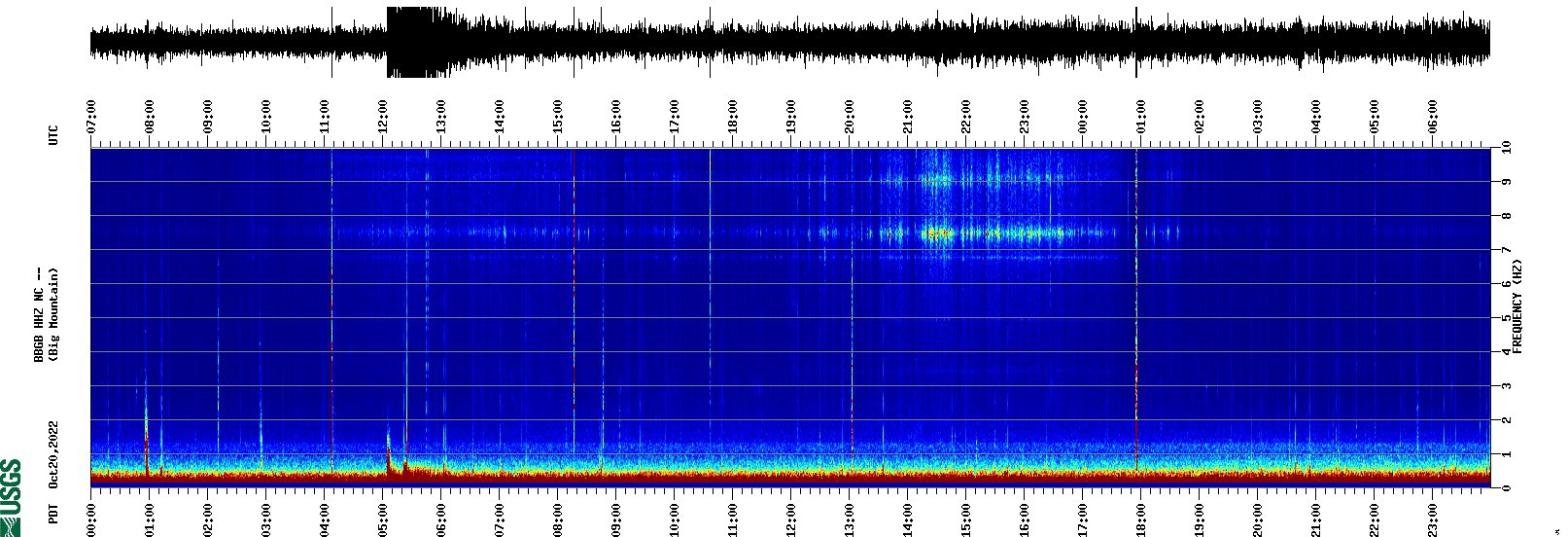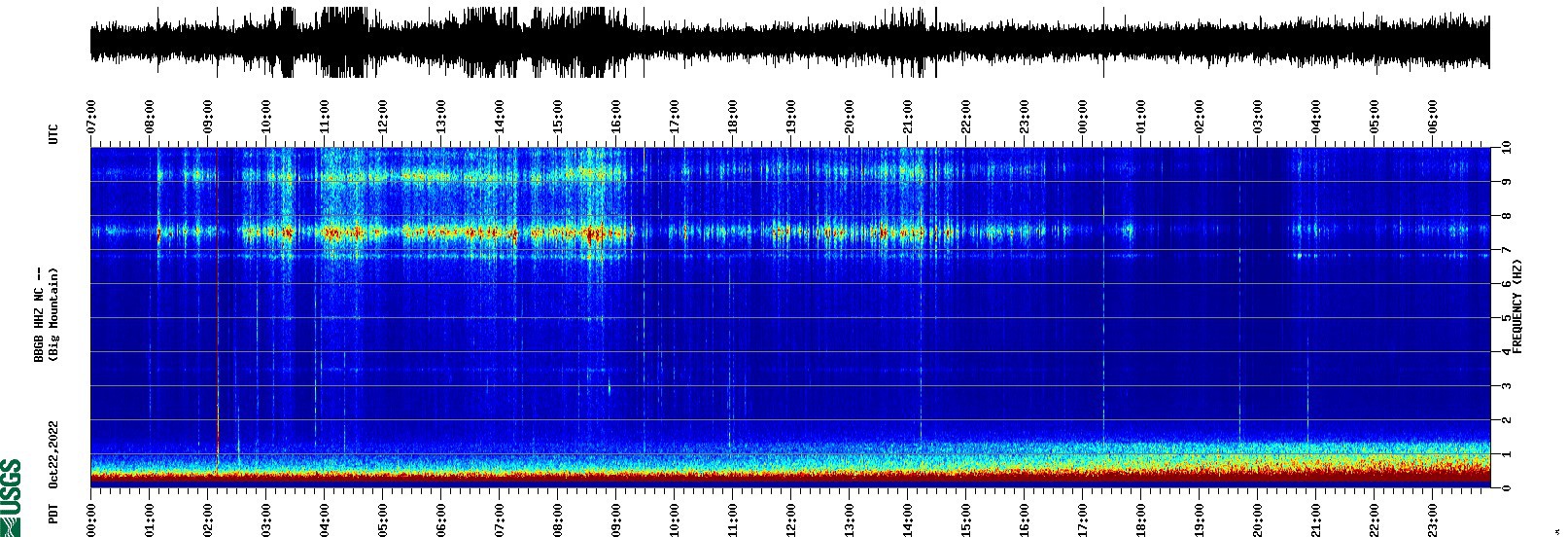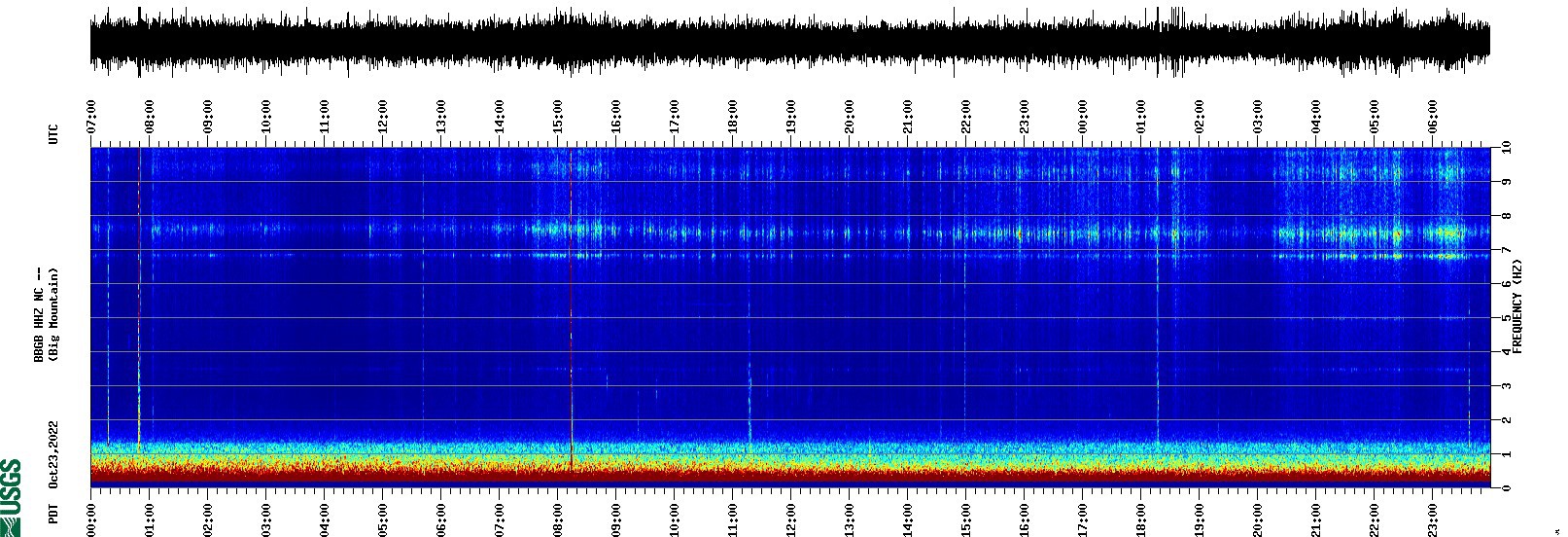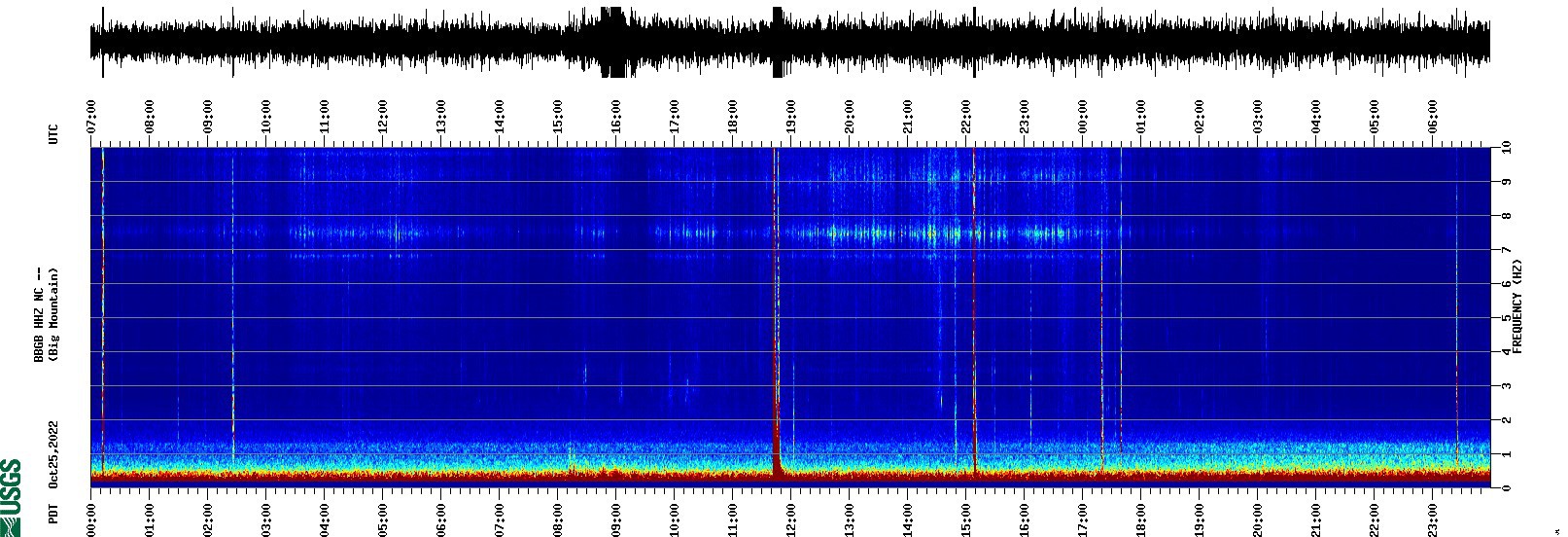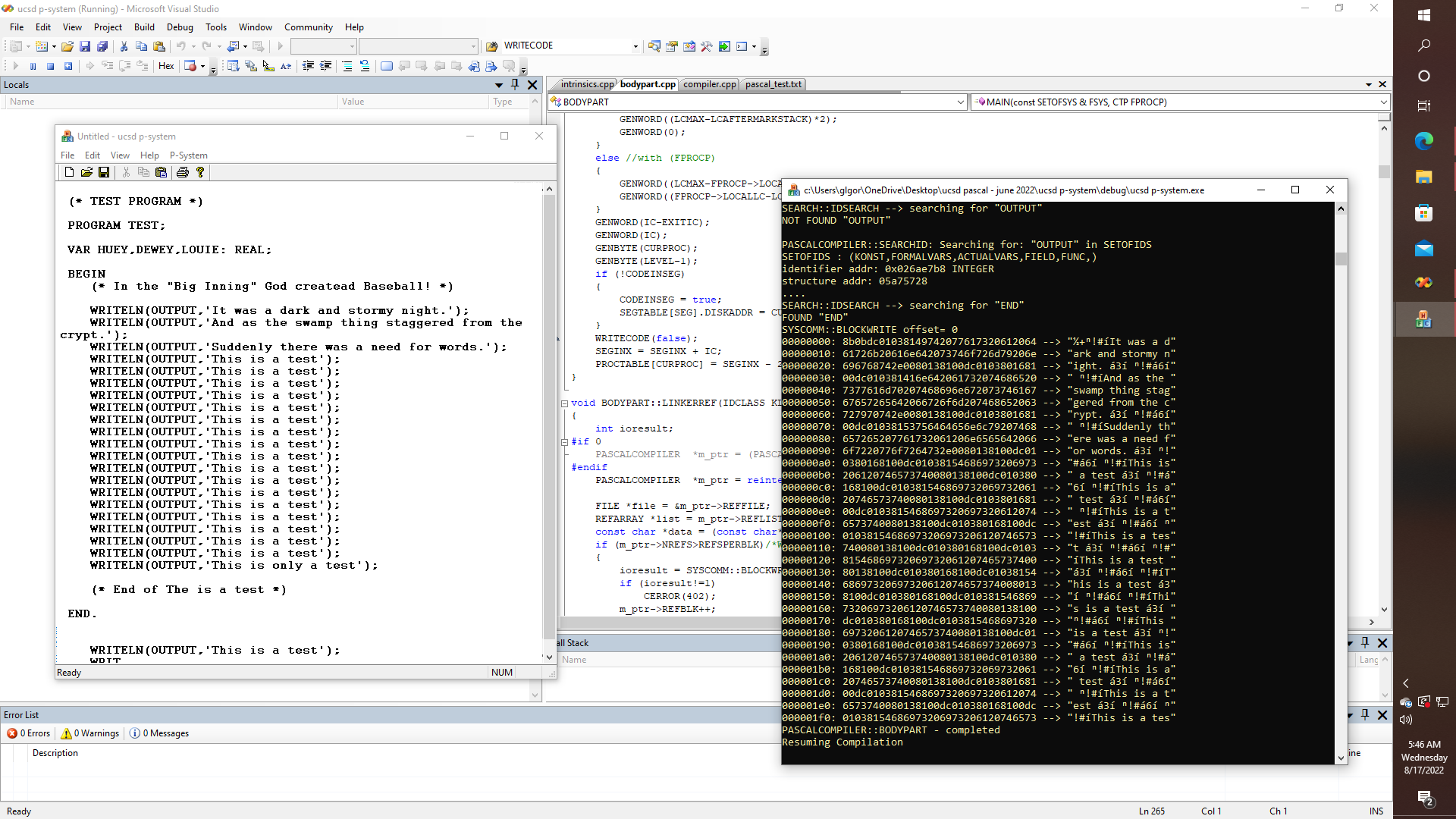-
Where this Train is Headed.
10/27/2022 at 03:20 • 0 commentsO.K., as stated earlier, what I really have been wanting to do is a bunch of stuff like audio in and sheet music out, possibly by building a Euro-Rack compatible module, that uses the Parallax Propeller P2, and then add some features that allow for features like removing vocals from existing records or CDs, or providing effects like vocoding or pitch correction, as well as being usable as a tone generator, or a sequencer, or a drum machine, etc. It will of course also work as a platform where it can act as the brains of a robot for industrial or STEM applications. And maybe it will be able to help predict earthquakes.
![]()
Of course, if you want to include the kitchen sink in all of this, that is up to you. Maybe some kind of faucet control system for the DIY'er, but that is not something that is on my agenda. In an earlier project, I noted that it is possible to implement a polyphase filter tree in layers, similar to the way that MP3 does it, but by using regular FFT"s instead of discrete cosine transforms. This approach goes a LONG way toward solving the anti-aliasing and frequency resolution at low frequencies, where event detection and isolation can otherwise be very problematic. In this image, we are looking at an analysis frame of processed data from the song Bohemian Rhapsody by the band Queen. Here we can see the algorithm is quite good at sniffing out some issues with the presence of a 100Hz component associated with the second harmonic of the British power line frequency, down about 64db or so. How Interesting. Also, and even more important is the fact that we can separate out the individual fundamental frequencies which are being sung by the quartet at the beginning of the song, when they sing "Is this the real life, or is this just fantasy" and so on, as if in "barbershop style". The notes at this particular point are easy to pick out as being: D-F-G and B flat. Transcribing the entire song is left as an exercise for the reader - obviously for Copyright reasons.
Now as far as performing wave matching of seismic signals, and some of the other stuff is concerned, the synergy should be obvious, that is to say, with respect to the utility that comes with having the ability to do distributed processing of individually separated time-domain signals that can therefore be subjected to further analysis on separate cores, CPUs, or even across a network.
Likewise, perhaps the method of analyzing the time evolution of energy content per properly anti-aliased sub-band might turn out to be a useful method for working around the problem of tachyonic-quasi-crystals and the issues that arise because of any associated Lambda-shift that occurs when trying to detect the rate of change of frequency of potentially premonitory p-waves. Not to be confused with echo removal. That is another subject that might seem related to some, because of the issue of the effect of phase or what happens when there is missing phase information affecting the stereo image, that is when we are doing audio compression, de-compression, thinking about cocktail party effect, and so on.
-
Evidence for Tachyonic Quasi-Crystals?
10/26/2022 at 23:51 • 0 commentsWhat was I drinking last night? Really! It was just Diet Coke along with some microwave burritos. Of course, if you don't know already, the San Francisco Bay Area had a 5.1 earthquake yesterday, and then they go on to say that according to experts, there is an eventual 7.5 quake on the way. O.K.., they just won't tell us when. Awwww. Come on! Can't they do better than give us a between two and twenty-second warning?
In an earlier project, entitled Stalking the Big One, from 2019, I discussed a possible method for detecting what might be premonitory p-waves associated with a major seismic event, several hours or even days before that event, that is by attempting to analyze the effects of induced sympathetic vibrations on the aquifer associated with a Geyser field hundreds of miles away.
Of course, just a few days after I posted that article, the public feed for that particular seismograph was mysteriously cut by who knows whom? Then, shortly thereafter, I read somewhere that either a Russian trawler or perhaps an Iranian boat operating in international waters allegedly cut through a transatlantic cable, and not only that - they stole hundreds of thousands of dollars worth of seismographic equipment which was being used to monitor for activity associated with undersea volcanoes. Hmmm. Kind of reminds me of a certain movie, maybe?
In the meantime, Trump doesn't believe in climate change, and Biden thinks that seismographs are a hoax. So let's take a look at the public feed for the seismograph at Big Mountain, and ask ourselves, IF yesterday's earthquake could have been predicted, forecasted, or anticipated, or whatever - based on the theory that I described in Stalking the Big One. First, take a look that the public feed for the last 15 days:
![]()
Now, let's take a closer look at the feed from the days leading up to the quake. For example here is October 17th, 2022.
![]()
Not much to see here, although it might useful to go back and look at the data for the last few years and see how much overall noise is typically present with this particular seismograph. Some of the other seismographs are rather pathetic in terms of the amount of anthropogenic noise that is picked up, i.e, traffic, and industrial noise, as well as natural sources of non-seismic information, like wind and rain that can really mess things up below two Hertz. Yet, IIRC, Big Mountain is usually pretty quiet in this respect and is a much better listening point than let's say Parkfield, or Mammoth, for example. Bollinger Canyon, I think is pretty much a mess, but someone had to build it anyway because sometimes you never know unless you try.
Now let's look at some later images from Big Mountain. This one is from October 20th, 2022.
![]()
Now the appearance of the beginnings of some kind of wow-signal at around 13:00 PDT. Here, we can see a strong signal at around 7.5Hz, and a medium signal at just barely above 9.0 Hz.
Now let's take a look at October 22, 2022 - skipping over October 21, because the feed is mostly inoperative on the 21st.
![]()
Here we see that the 7.5Hz component has gone from strong to intense, subjectively speaking and that the 9Hz component appears to be shifting upward, with some additional activity breaking through towards almost 10Hz! Furthermore, the intensity of that component has also increased substantially.
Now by way of analogy, even if the analogy is not strictly accurate, this is exactly what we would want to see, were we for example trying to study a simulation of some kind of fracture dynamics by intentionally over-tightening let's say: a guitar string or a piano string, Which we might tighten, and then pluck - over and over again as we watch the frequency increase, and increase, and increase, that is until the material begins to enter a kind of visco-elastic semi-plastic phase, like some kind of pizza string cheese effect, resulting in a rapid decrease in resonant frequency, and then sudden failure.
This is also just like what you might have noticed if you ever had the unpleasant experience of snapping off a bolt here or there while working on an expensive engine. When you know THAT feeling, well YOU never forget it.
Now let's look at Sunday, October 23, 2022:
![]()
Here we go! Are we entering visco-elastic failure mode or are we not? The 9.5Hz component is starting to fade, but there is also this 6.8 Hz, or thereabouts component that seems to be getting stronger. Now, what if we could plot df/dt and solve for t=0? We need more data, and here it is from Monday, October 24th, 2022.
![]()
Look at in increase in intensity, even though the higher frequency components are starting to fade out, the lower frequency undertone is continuing to increase in intensity. This is exactly what the visco-elastic failure model predicts, and then, the earth falls silent - just like it did right before Ridgecrest, even though we do continue to get a scattering of broadband streaks suggesting traditional foreshock or swarming activity, which is also a bit unusual for Big Mountain, but remember - according to the USGS, these seismographs are supposedly sensitive enough to detect anything bigger than a magnitude 5 as far away as Tokyo. Triangulating sources by examining the time of arrival at multiple sites is not within the scope of this article.
Now let's look at the main event: Tuesday, October 24th, 2022.
![]()
Now imagine that you are climbing a tree, and as if, isn't this all of a sudden, you find yourself way too far out on a limb, you hear a loud crack in a certain branch, you know, as in your branch. This is not the time to call that insurance guy who comments as a meteor strikes someone's garage - but you know that "that can't be good". with a little luck, you just might have a chance to sing a verse and a chorus of Rock-a-Bye Baby in the Tree-Top and then you know what happens next. At 12:10 AM there was what looks like another foreshock, followed by yet another possible foreshock at around 2:20ish, followed by the main event at 11:46 AM.
I postulate, therefore, that earthquakes actually happen the day before you think that they happen. We just need to figure out how to calculate the time between that "when the bough breaks" event and well, you know - SPLAT!
The role of Tachyonic-Quasii crystals will be discussed further in a later log entry. Good luck Big-Bent Cereal Box-shaped State! (With all of the fruits, nuts, and flakes - crumbs tend to sink to the bottom, but that is another subject.) Good Luck. You will need it.
In any case - here is a link to the PUBLIC DOMAIN (for Copyright purposes) feed of the Big Mountain Seismograph:
-
What a long strange trip - it's been
10/09/2022 at 09:00 • 0 comments![]()
Then again, like I once said, even though the Pascal compiler has reached "hello world" status, meaning that it seems to be generating something that looks like a binary p-code image - (including Linker info - finally!) there is still the notion of trying to make use somehow of the Parallax Propeller P2 chips built in FORTH interpreter - which out the box appears to support 432 FORTH "words"; giving rise to the idea that it should be quite simple from this point forward to not only take the approach of creating a p-machine for Arduino and/or Propeller but of also having a Pascal to Forth converter which makes use of the C++ version of the Propeller Debug Terminal, which was the major focus of last years project. The next steps therefore will involve project integration as well as debugging. Right now the Pascal compiler has some issues with not correctly handling the record type when compiling the actual body of a program, even though it seems to get through the first phase of compiling even the most complicated programs correctly with respect to handling CONST, TYPE, and VAR declarations, even when the compiler tries to compile itself.
Then - onto hardware fabrication, of SOMETHING that does SOMETHING more than just sit there and blink!
-
Hello Cruel World - Part II
09/19/2022 at 08:17 • 0 commentsIn the project that preceded this one, i.e., Prometheus, we finally reached Hello World status with the C++ port of the UCSD Pascal compiler. So even though there are LOTS of bugs, something that looks like p-code is starting to take shape.
![]()
Stay Tuned!
Tachyonic Quasi-Crystals vs. Unobtainium?
Saving the world isn't easy. Yet maybe the solution is simple: Just plant a seed. Or write some code - one day, or line ... at a time.
 glgorman
glgorman